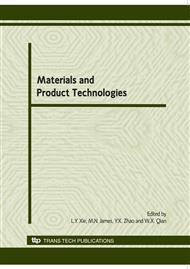p.561
p.566
p.571
p.576
p.581
p.586
p.591
p.596
p.601
Diffuse Response Surface Methodology to Reliable Optimization of Numerical Control Milling
Abstract:
The selection of adaptable machining parameters is a key part in numerical control (NC) milling process. Deterministic optimal parameters are obtained without considering the uncertainties of machine tools. So a reliable optimization method was introduced in this study. We focus on a response surface methodology (RSM) adapted to reliability-based design optimization (RBDO) based on Diffuse Approximation (DA). A variant of the first order reliability method (FORM) is chosen to calculate the safety index. Case study is investigated for the NC milling operations of ultrahigh strength steel. We show how to get the optimal parameters with the safety index by the reliable optimization method.
Info:
Periodical:
Pages:
581-585
Citation:
Online since:
June 2010
Authors:
Price:
Сopyright:
© 2010 Trans Tech Publications Ltd. All Rights Reserved
Share:
Citation:


